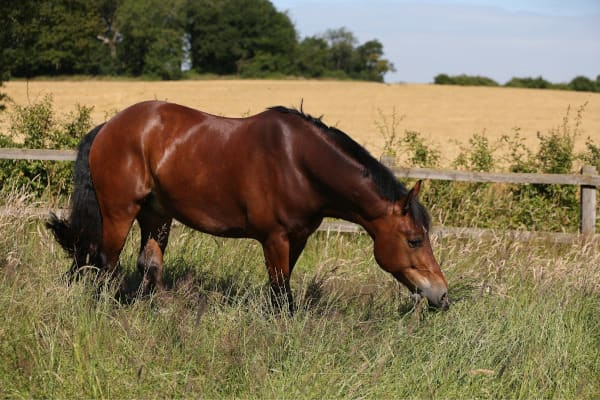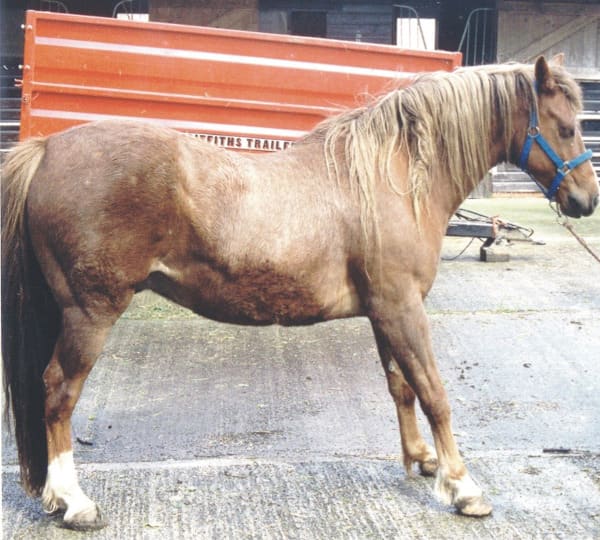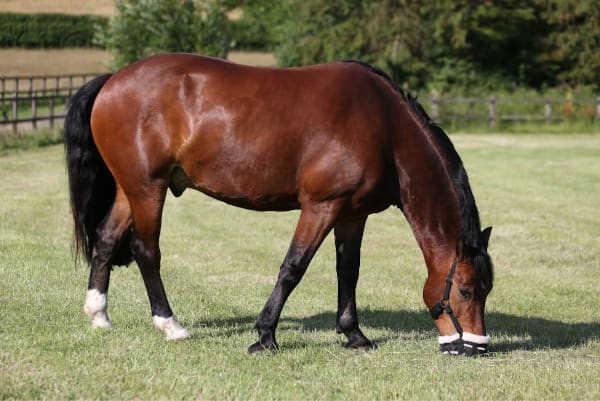What is laminitis?
In the simplest sense, laminitis is damage to or failure of the laminae (which attach the pedal bone to hoof wall) causing varying degrees of pain and lameness. This ‘failure’ of the laminae can result in rotation and/ or sinking of pedal bone which in the most severe cases, may lead to the pedal bone penetrating the sole of the hoof.
What causes laminitis?
The exact sequence of events or ‘mechanisms’ that can lead to the development of laminitis remains elusive. Endocrine or ‘hormone’ related cases are now thought to be most common and include those associated with PPID (Cushing’s syndrome) and insulin dysregulation. These cases may be triggered by the horse eating enough non-structural carbohydrate (NSC) from feed or forage to cause an increase in the amount of insulin circulating in the blood, although exactly how this causes laminitis is still not clear.
In other horses and ponies, a disruption to the microflora in the large intestine or ‘hindgut’ as result of grazing ‘lush pasture’ or consuming feeds high in NSC may also lead to development of laminitis. Less common causes include those related to toxemia as result of a retained placenta or severe infection such as pneumonia, and ‘mechanical laminitis’ or ‘supporting limb laminitis’ as a result of excess weight bearing due to infection or injury in the other leg.
Which horses and ponies are most at risk?
Any horse or pony may develop laminitis at any time, but a number of risk factors have been identified including:
- Genetics e.g. native breeds or being a pony
- Recent weight gain & obesity, particularly in horses and ponies with a body condition score (BCS) of 7 or above
- Regional fat deposits including a cresty neck
- PPID (Cushing’s)
- A history of laminitis
- High intakes of non-structural carbohydrate (starch and sugar) from feed and/ or forage
- Insulin dysregulation
- Low adiponectin (measured via blood test). Adiponectin is a hormone secreted by fat cells that helps to regulate glucose and fat metabolism

Making sense of starch & sugar
The different terms used to describe starch and sugar can sometimes cause confusion
- Non-structural carbohydrate (NSC) = starch + water soluble carbohydrate
- Water soluble carbohydrate (WSC) is largely made up of simple sugars and fructan – the ‘storage form’ of sugar in most UK grasses
Insulin dysregulation (ID)
Insulin is a hormone produced by the pancreas. The release of insulin signals cells (mainly in liver and muscle tissues) to absorb glucose from the blood. Insulin dysregulation is a term used to describe abnormal insulin production and/ or absorption and may include any combination of the following:
- High basal insulin (hyperinsulinemia)
- Exaggerated insulin response after consuming starch and/ or sugar
- Insulin resistance – a failure of cells to respond to insulin
Equine metabolic syndrome (EMS)
EMS is a collection of risk factors that puts the horse at an increased risk of endocrine (hormone) related laminitis, the most important of which is insulin dysregulation. Insulin dysregulation is the central feature present in all cases of EMS which means before a diagnosis of EMS can be made, insulin dysregulation must be confirmed (via blood test) first. Although obesity is common, it is now recognised that lean horses and ponies may have EMS too.
Whilst all horses with EMS are at an increased risk of laminitis, they do not all develop laminitis. The reason for this is still not fully understood but it is thought to involve a complex interaction between the individual horse or pony’s genetics and their environment/ management.
Signs of laminitis
Being able to spot the signs of an attack early maximises your horse’s chance of recovery so it pays to be vigilant, especially as subtle signs such as slight reluctance to turn or shortening of stride can be easily missed
- Weight shifting
- Changes in gait including a shorter stride or ‘pottery’ movement
- Reluctance to move or turn
- Lameness
- Abnormal stance. Some horses and ponies will adopt the classic ‘laminitic stance’ in an attempt to try and relieve pressure on the forefeet. However, how the horse or pony stands will depend on the severity of laminitis and which feet are affected. In fact, if all 4 feet are affected the horse or pony may stand normally.
- A strong/ bounding digital pulse
- Hot feet
- Signs of pain such as sweating and increased pulse, temperature and respiration rates (which may be mistaken for signs of colic)
- Refusal to move or stand in severe cases

Hot feet: a word of caution
Hot feet are not always the most reliable indicator of laminitis. Hoof temperature fluctuates and if your horse has been stood outside in the height of summer, hot feet are not necessarily a concern. However hot feet for prolonged periods or on a cold day and/ or heat in one or two feet only should raise suspicion.
Signs of chronic laminitis
Being able to identify signs of chronic laminitis is key to successful management. These include:
- Abnormal hoof growth, in particular faster growth at the heel than the toe
- Laminitic hoof rings which are often wider at the heel than the toe
- Thin and/ or bruised soles
- Convex or dropped soles
- Bruising or blood in the white line
- Stretched white line
- Cracked and or ‘flared’ hoof walls
- Change in the hoof wall angle
- Rotation of the pedal bone (shown by x-ray)
Feed & management tips
- Restrict or remove grazing. In horses and ponies at very high risk, complete removal of grazing may be necessary.
- Avoid turning out on sunny frosty mornings – grass exposed to cold temperatures in conjunction with bright sunlight may contain high levels of WSC.
- Ideally feed a low WSC hay (<10% on a dry matter basis) as opposed to a low WSC haylage. Alternatively consider feeding a hay replacer low in starch and sugar.
- Although soaking hay helps to reduce the WSC content results are highly variable and cannot guarantee suitability for laminitics.
- Balancers are the ideal way to provide vitamins, minerals and protein without excess calories, starch and sugar.
- Not all laminitics are overweight. If additional calories are required look for fibre based feeds that are low in starch and sugar.
- Avoid all mixes and cereal based feeds – cereal grains are high in starch.
- Divide feeds into as many small meals as possible to help reduce the amount of starch and sugar consumed in any one meal.
- Ideally monitor weight weekly and BCS fortnightly.
- Aim to maintain a body BCS of 4.5-5 out of 9.
- If possible, maintain a regular exercise programme. Research has shown that even small amounts of exercise can help to improve insulin sensitivity.




